Multi-layered flavour penetrating the tender meat, braised spare ribs with black bean sauce is a scrumptious treat requiring effortless preparation.
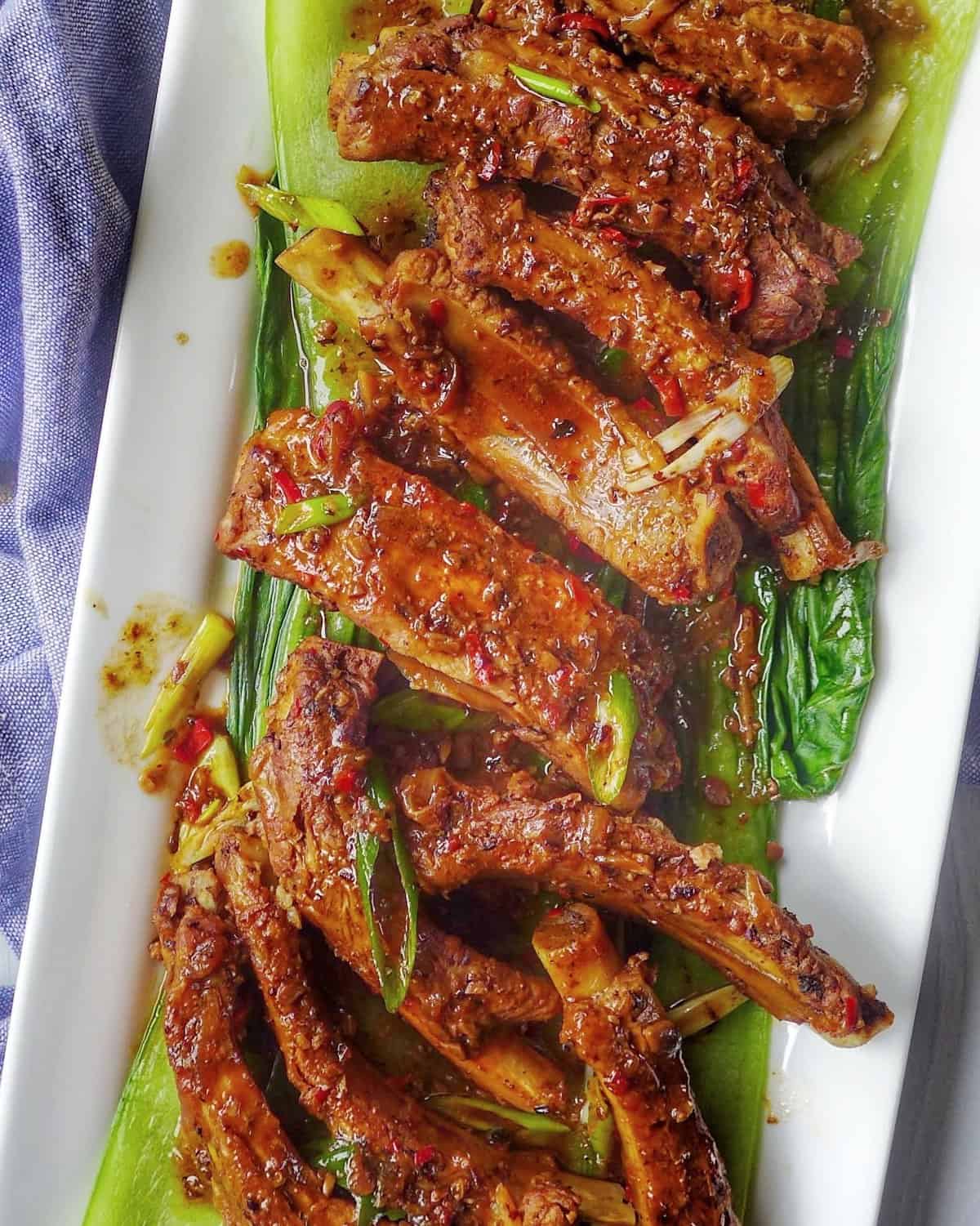
If you have had Cantonese dim sum brunch, you might know a dish called steamed spare ribs with black beans (豉汁蒸排骨). Bite-sized ribs seasoned by whole black beans and other Chinese condiments. It’s one of my favourite dim sum dishes. Inspired by this classic delicacy, I created a recipe using my homemade Spicy Black Bean Sauce. It’s finger-licking good and super easy to cook.
These ribs are tender & flavourful
The dim sum steamed ribs have a chewy texture, whereas my braised spare ribs with black bean sauce are much tenderer. Cooked in liquid for at least 40 minutes, most of the meat falls off the bone quite easily. The braising process also helps the pungent flavour of black bean sauce to penetrate the meat.
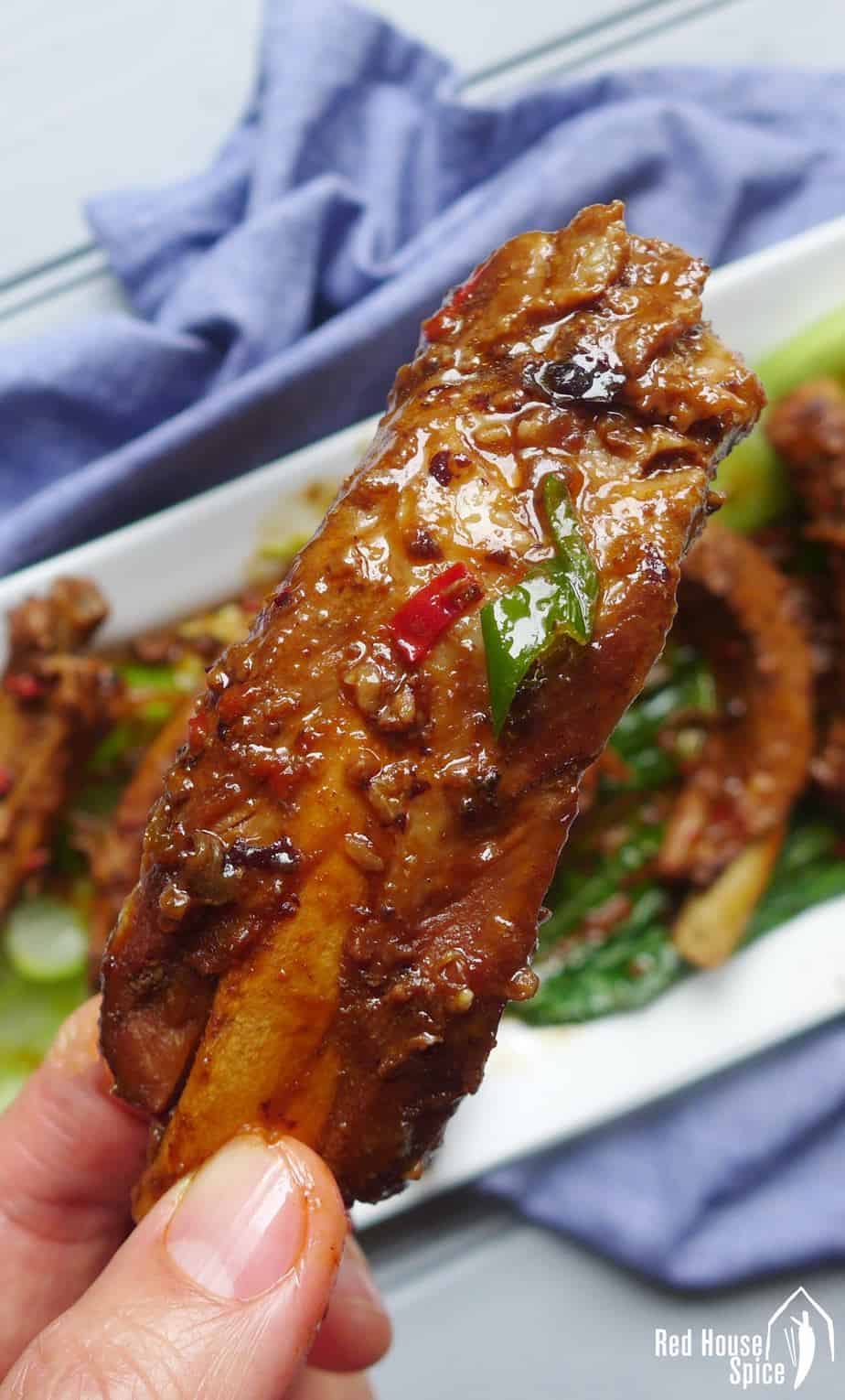
How to braise meat the Chinese way
In Chinese cuisine it’s very common to braise meat with aromatics, spices and flavour packed sauces. Chinese Beef Stew and Braised Pork Belly are two popular examples. Braised meat dishes, including today’s spare rib recipe, often share the same cooking procedures:
- Blanch the meat to remove most of the impurities. Make sure you put the meat into cold water then heat up (instead of putting it into boiling water).
- In a clean pot, fry onion, ginger or garlic, etc. in a bit of oil to release their aroma. For today’s recipe, I use yellow onion (for its natural sweetness) and ginger.
- Stir in drained meat. Add seasoning and water. Leave to simmer.
- When the meat is fully cooked, uncover the pot then cook on full heat to reduce and thicken the liquid. You should skip this procedure on two conditions: if the liquid is rather clear and can be consumed as a soup on its own, or the braising dish is cooked for a noodle soup dish.


Make your own black bean sauce
In this braised spare rib dish, the key flavour comes from the homemade spicy black bean sauce which has a complex and multi-layered taste. You can use this versatile sauce to cook vegetables, meat, tofu, fish and seafood.
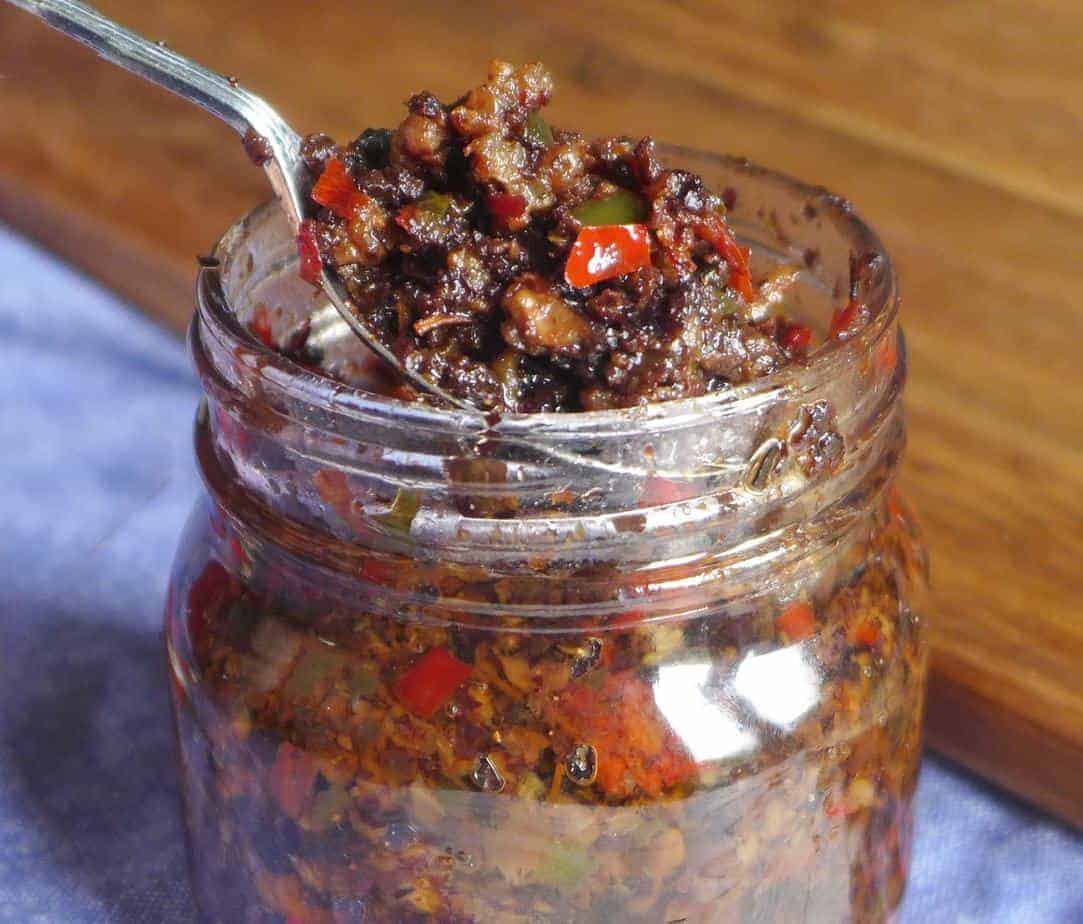
My recipe makes about 1 cupful of black bean sauce. Store it in an airtight jar when it’s completely cool and use it within 2 weeks.
🛎 Substitutes: If you don’t have time to make the sauce yourself, please feel free to use shop-bought black bean sauce, such as Lao Gan Ma preserved black beans in chili oil (老干妈风味豆豉). Due to the different levels of saltiness, you might need to adjust the volume of the sauce needed.
Other Classic Recipes
There are so many delicious ways to cook meat in Chinese cuisine. Here are a few dishes you might like:
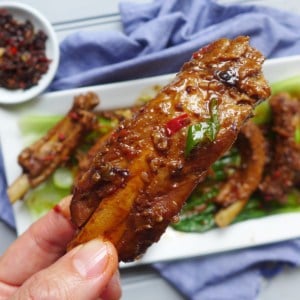
Braised spare ribs with black bean sauce
Ingredients
For the black bean sauce (skip if using shop-bought version)
- 70 g fermented black beans - about ½ cup
- 110 ml cooking oil - about ½ cup
- 1 stalk scallions, cut into sections
- 3 slices ginger
- ½ teaspoon Sichuan pepper
- 3 tablespoon fresh chilli, finely chopped - optional
- 2 tablespoon garlic - minced
- 1 tablespoon light soy sauce
- 1 teaspoon Shaoxing rice wine
- ½ teaspoon sesame oil
- 1 pinch sugar
- 1 pinch salt
For the ribs
- 700 g spare ribs - about 1½ lb
- 1 tablespoon cooking oil
- 1 onion, sliced
- 2 teaspoon ginger, julienned
- 3 tablespoon homemade black bean sauce - or shop-bought (see note 1)
- 1 tablespoon light soy sauce
- 1 stalk scallions, finely chopped
Instructions
Make the black bean sauce (skip if using shop-bought version)
- Rinse fermented black beans under running water. Dry them very well with kitchen paper. Coarsely chop them into small pieces.
- Place scallions, ginger and Sichuan peppercorn in a wok. Pour in oil then heat up over medium heat. When the scallions and ginger become lightly brown, pick them out along with the Sichuan peppercorn and discard.
- Add fermented black beans and all the other ingredients for the sauce into the oil. Stir fry for 2-3 minutes. This recipe makes about 1 cupful of sauce (See note 2 for other usage and storage tips).
Braise the pork ribs
- Put ribs into a pot filled with cold water (enough to cover the ribs completely). Bring the water to a full boil. Use a spoon to skim off the froth on the surface. Then drain the ribs.
- Heat up the oil in a clean pot over medium-high heat. Fry onion and ginger until they become soft.
- Stir in drained ribs. Add black bean sauce and soy sauce. Pour in hot water (just enough to cover the ribs). Cover the pot with a tight lid. Leave to simmer for at least 40 minutes until the meat becomes tender.
- Turn the heat to high, then cook uncovered until the broth reduces by half and becomes thick. Stir in scallions then dish out to serve.
NOTES
NUTRITION
NUTRITION DISCLOSURE: Nutritional information on this website is provided as a courtesy to readers. It should be considered estimates. Please use your own brand nutritional values or your preferred nutrition calculator to double check against our estimates.


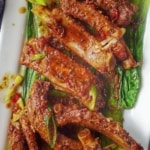

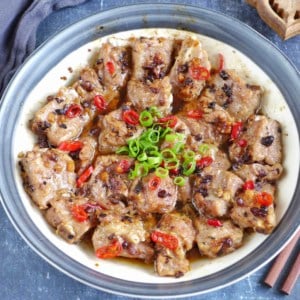

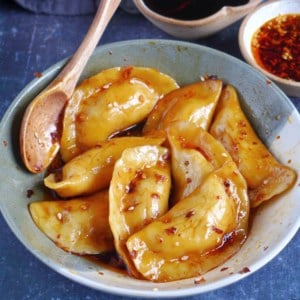
Great recipe! I’m going to try this one day:)
God bless you.
Thanks for one of my favourite dim sim. Definitely have to try it one day as I get to eat 1- 2 pieces at most when we go for a yum cha. Ha ha.
Regards.
Margaret.
Happy cooking Margaret!
Hi Wei, what a fab recipe, your black bean sauce is superb, European guy living in Taiwan, made this for the local guys and girls in the office, you have made me a minor celebrity ! They loved it !
Keep up the good work, you have great website.
Wow! That’s great news to hear. Thank you for trying out my recipe and I hope you will impress your friends with more scrumptious dishes.
Hi Wei, love your website!
Should the ribs be place on one single layer when braising?
Thank you!
It doesn’t matter how many layers as long as the ribs are covered by water when braising starts.
Hi Wei. I made this last night and served it as soup, instead of noodles I boiled some potato cubes in the broth after removing ribs. (I love potatoes in hotpot so I figured “why not?”) I woke up thinking about the soup, I had to let you know how amazing hubby and I thought this was.
–Dana
Thank you very much Dana for sharing your nice alteration of my recipe. So happy to know you and your husband enjoyed it!
I like ribs. Thanks about this recipes.
You are welcome Robert!
Hi, How come you said make sure to put the meat in cold water instead of boiling water? What is the difference? I always put the meat in boiling water when I Blanche the meat.
Hi! Thank you for your interest in my recipe! Yes, I always start the blanching process with the meat in cold water, then let it simmer for a while after the water begins to boil (as my parents and grandparents always did). With this slow and gentle method, I find it’s more effective to get most of the impurities out of the meat than starting in boiling water. Hope my explanation is helpful. However, if boiling water works fine for you, stick to it. Cooking is a very personal thing after all. Have a great day!
agree, if thrown straight into boiling water it shocks the meat and it contracts.. in cold water that gradually heats it melts out the fat and impurities rather than trapping them in the meat fibres..
Well explained!